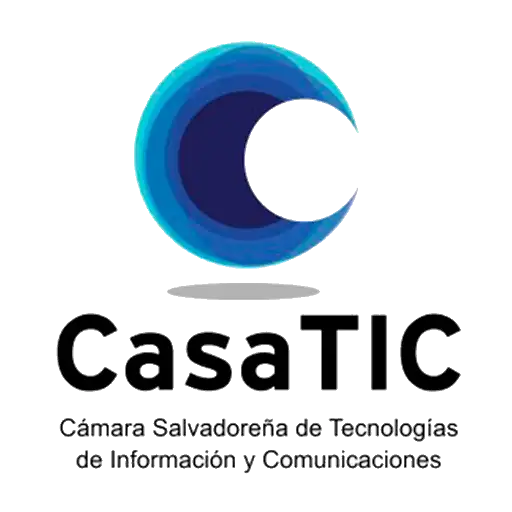-
Who we are
-
-
StrategyMission
To solve the challenges of organizations and communities through intelligent, secure, sustainable, and people-centered solutions, so they generate real value in their social and productive contexts.
VisionTo be the chosen company by organizations seeking to innovate with quality, purpose, and trust in the intelligent era.
Learn moreValues- Ethics and transparency
- Professionalism
- Respect
- Honesty
- Innovation
- Responsibility
- Effectiveness
- Integrity
- Customer orientation
- Punctuality
-
-
-
History
Sofis Solutions was born in 2005, in the city of Montevideo - Uruguay.
Since its inception, the main driver was and remains quality. This applies to processes, products, and relationships with the environment.The internationalization of the company It was one of the founding objectives. In the first stage, it expanded from Uruguay, and in the second stage, it opened offices in Latin American countries. Currently, it has offices in Montevideo, Panama, El Salvador and Ecuador.

-
-
-
Alliances








-
-
-
Certifications

CMMI-DEV-3
More informationNational Quality Award
More informationISO 9001:2015
Quality Management SystemISO 37001:2016
Anti-Bribery Management SystemISO 14001:2015
Environmental Management System
-
-
-
SustainabilityLearn more
Sofis Solutions integrates environmental, social, and governance (ESG) principles into its management and operations, driving sustainability through Digital Transformation. Its strategic approach prioritizes energy efficiency, digital inclusion, and transparency in digital governance, contributing to the responsible development of organizations.

-
-
-
What we do
-
-
IT projectsLearn moreAt our Software Factory, we specialize in providing software development solutions with a focus on excellence and sustainability.
-
-
-
Software qualityOur software quality services comprehensively address the aspects or dimensions of software quality, addressing this approach throughout the entire software development cycle.
- Manual and automated functional suitability testing
- Performance testing
- Software product quality
- Software quality consulting
Learn more
-
-
-
Staff AugmentationLearn moreWhat is IT Staff Augmentation? IT Staff Augmentation is a specialized technical staffing model that enables organizations to increase their agility and respond to the changing technological needs of the market.
-
-
-
ConsultancyIn the public sector, strategic decisions and projects with citizen-centered designs and excellence have the power to transform entire communities.Learn more
-
-
-
BIonA SuiteBIonA Suite is a comprehensive platform for the intelligent management of processes and services in public and private organizations. BIonA Suite facilitates smart transformation with a focus on public value and user experience. Learn more
-
-
-
Projects
-
-
Recent projects
 FOCAL Regional StudyFOCAL - El Salvador
FOCAL Regional StudyFOCAL - El Salvador Single Registry of Uruguayans AbroadMinistry of Foreign Affairs - Uruguay
Single Registry of Uruguayans AbroadMinistry of Foreign Affairs - Uruguay Population and Housing Census 2023National Institute of Statistics - Uruguay
Population and Housing Census 2023National Institute of Statistics - Uruguay
-
-
-
Digital Public InfrastructureWhat are Digital Public Platforms?ProjectsProducts
-
-
-
-
Mobile applicationsWe create hybrid, native, and PWA solutions for devices with Android and iOS operating systems.
Some of our projects:Digital Patrols, Ecuadorian Bovine Information System, Easy Budget UY, Digital Portfolio, SIGES Teachers App, SIGES Parents App.
Learn more
-
-
-
FOCAL regional studyThe purpose of the study was to carry out a regional analysis with the objective of identifying and evaluating the maturity level of the member countries of the Latin American Government Accounting Forum (FOCAL), currently composed of Argentina, Bolivia, Brazil, Chile, Colombia, Costa Rica, Ecuador, El Salvador, Guatemala, Honduras, Mexico, Nicaragua, Panama, Paraguay, Peru, Dominican Republic, Uruguay and Venezuela.Learn more

-
-
- AI
-
-
Artificial IntelligenceLearn moreAdvanced Artificial Intelligence (AI) and Big Data solutions that transform the way organizations make decisions and optimize their operations. We specialize in the development of intelligent autonomous agents and generative AI solutions using large language models (LLMs), both on local infrastructure and in the cloud.
-
- Press Room
-
-
Sustainable development
-
- Innovation
-
-
#GreenSofisMore information
Methodology
#GreenSofisSustainable Digital Transformation Conference
#GreenPath
-
-
-
AI For Everything
It is an initiative by Sofis Solutions, from the Intelligent Solutions Division, that promotes the adoption of artificial intelligence as a key driver of efficiency and effectiveness in the intelligent era.
It integrates both administrative and operational processes, promoting an organizational evolution where technology amplifies knowledge, optimizes decision-making, and generates value in a sustainable and inclusive way.
More information
-
- Contact us
- ES PT-PT
-

Quality Management System: a path toward organizational excellence
Montevideo, November 30, 2022.
The adoption and implementation of a Quality Management System contributes to improving the overall performance of organizations. It has multiple benefits, including: maximizing the efficiency and quality of processes, fostering a culture of continuous improvement, increasing customer satisfaction levels, and applying risk-based thinking.
A Quality Management System, based on the ISO 9001 Standard, strengthens management and generates a positive impact on the business model by providing greater control of internal processes and improved efficiency.
This international standard brings great value to organizations, as it provides an overview of the status of their processes and offers guidelines to identify opportunities for improvement. Organizations that decide to implement ISO 9001 are committed organizations, applying best practices toward the excellence of their products and/or services.
For Sofis Solutions, management systems are a priority. They provide integral mechanisms that allow the organization to plan, organize, evaluate, and control general or more specific processes. In particular, the outcome of the quality management system is to ensure the quality of the products and services the company provides to its clients and stakeholders. The risk-based focus embedded in this system also makes it possible to act preventively and reduce exposure to threats that may affect the quality of services or products.
This month, the company received the Maintenance Certificate under ISO 9001:2015 Quality Management Systems, granted by the Uruguayan Institute of Technical Standards (UNIT). The scope of the Quality Management System covers the processes involved in the design, development, and maintenance of software products by Sofis Solutions Uruguay.
Quality Management Systems become an instrument that contributes to achieving the Sustainable Development Goals (SDGs), including SDG 1: No Poverty, SDG 9: Industry, Innovation, and Infrastructure, SDG 12: Responsible Consumption and Production, and SDG 14: Life Below Water. Their contribution lies in the synergy between the social, environmental, and governance spheres, aligning work methodology with the creation of more inclusive and sustainable products and services.

El pasado 20 de noviembre se llevó a cabo en la Sala Verdi la edición piloto de Burocracia Creativa UY 2025, la antesala local del Creative Bureaucrac......

Between October 14 and 16, 2025, the XI Forum of Government Accounting Offices of Latin America (FOCAL) was held in Santiago, Chile, a regional refere...

Within the framework of the United Nations Global Compact's 2024–2025 strategy, which proposes five transformative changes to accelerate business impa...












 Digital Signature
Digital Signature BionA Suite
BionA Suite Biona SIgn
Biona SIgn






















